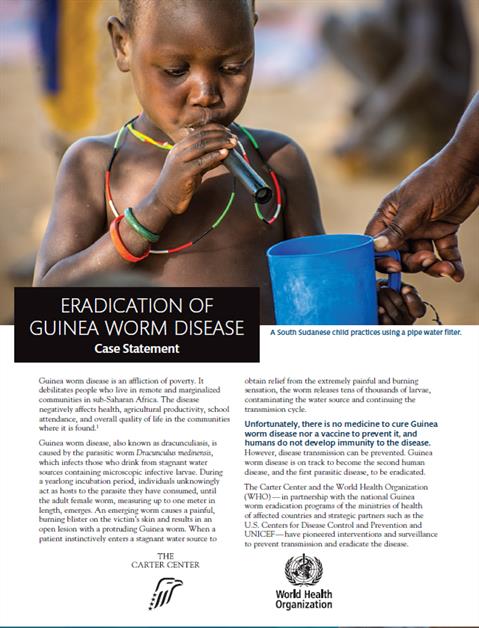Eradication of Guinea Worm Disease
Case Statement

Overview
Guinea worm disease is an affliction of poverty. It debilitates people who live in remote and marginalized communities in sub-Saharan Africa. The disease negatively affects health, agricultural productivity, school attendance, and overall quality of life in the communities where it is found.
Guinea worm disease, also known as dracunculiasis, is caused by the parasitic worm Dracunculus medinensis, which infects those who drink from stagnant water sources containing microscopic infective larvae. During a yearlong incubation period, individuals unknowingly act as hosts to the parasite they have consumed, until the adult female worm, measuring up to one meter in length, emerges. An emerging worm causes a painful, burning blister on the victim’s skin and results in an open lesion with a protruding Guinea worm. When a patient instinctively enters a stagnant water source to obtain relief from the extremely painful and burning sensation, the worm releases tens of thousands of larvae, contaminating the water source and continuing the transmission cycle.
Unfortunately, there is no medicine to cure Guinea worm disease nor a vaccine to prevent it, and humans do not develop immunity to the disease. However, disease transmission can be prevented. Guinea worm disease is on track to become the second human disease, and the first parasitic disease, to be eradicated.
The Carter Center and the World Health Organization (WHO) — in partnership with the national Guinea worm eradication programs of the ministries of health of affected countries and strategic partners such as the U.S. Centers for Disease Control and Prevention and UNICEF — have pioneered interventions and surveillance to prevent transmission and eradicate the disease.
